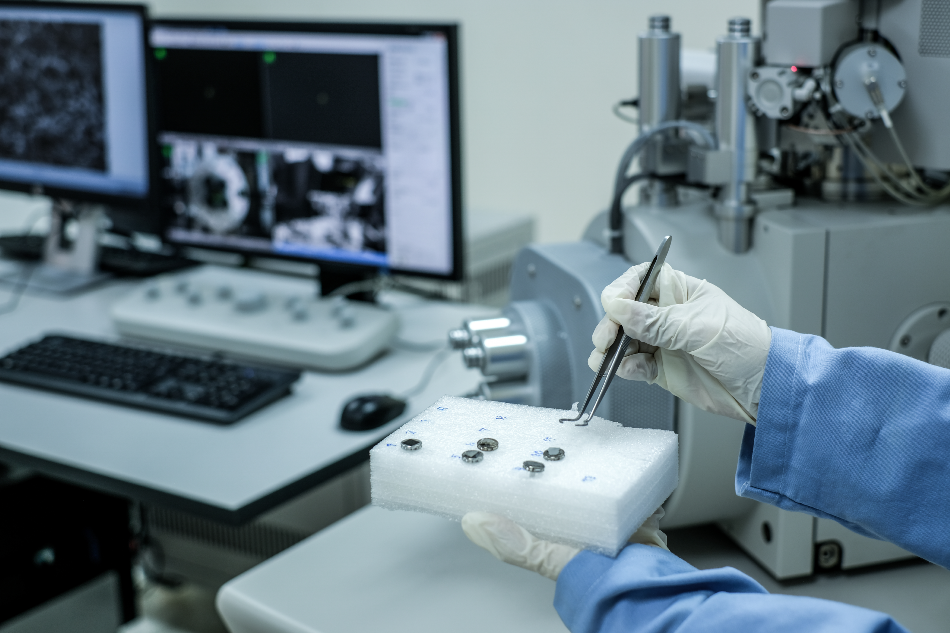Article updated on 9 February 2021
As materials get smaller, transforming from bulk material to nanoparticle, their properties alter. Materials at the nanoscale are frequently reported to have unique optical, electronic and/or, mechanical properties. It is these properties that have made nanoparticles an increasingly popular field of study. Researchers are committed to understanding how the nanoscale versions of materials behave, and what properties they have, to exploit them and establish new and useful applications with new capabilities.

Image Credit: Anucha Cheechang/Shutterstock.com
Why Investigate the Mechanical Properties of Nanomaterials?
We know that as materials reach the nanoscale they no longer hold the same properties as their bulk material counterparts. To take advantage of the nanoparticles’ potential, their properties need to be fully understood. Their mechanical properties are dependent on their size, but for many nanoparticles, these are still unknown. Research is key to allowing nano-sized material to be used in future applications. They have the potential to be crucial in the development of novel, adaptable, and incredibly sensitive devices for applications in various areas, such as mass detection, frequency synthesis, detection of force and light, surface engineering, tribology, nano-manufacturing/nano-fabrication, and other fields.
To create successful applications, research must delve into the mechanical properties of nanomaterial, such as elastic modulus, hardness, movement law, interfacial adhesion and friction, and how these properties evolve with size.
What we Currently Know
Currently, much is unknown in terms of how mechanical properties change as materials go nano. Physicist Richard Feynman wrote that 'As we go down in size, several interesting problems that arise.’ Referring to the complexity of understanding the properties of nanoparticles. Below is what research has uncovered so far.
Hardness and elastic modulus of nanoparticles
Uncovering the nature of the hardness and elastic modulus of nanoparticles enables the successful design of the particles for specific applications. Atomic force microscopy (AFM) has been used successfully to study the elastic modulus of several nanoparticles. Researchers have bent and compressed nanoparticles with the help of AFM and have uncovered that when materials reach the nano size, their hardness and elastic modulus diverge from their equivalent bulk materials.
It has also been observed that there are some size-dependent behaviors. The results can be categorized into three sections. The first describes spherical polymer nanoparticles, for which no uniform size-dependent behaviors of the mechanical properties have been found. The second refers to crystalline metal nanoparticles. These have been found to have dislocations inside the particles that contribute to the differing mechanical behavior as they reach the nano size. Finally, nanowires and nanotubes have been discovered to have elastic moduli that decrease with an increasing radial diameter. Researchers suggest that an increase in modulus is related to the impact of surface stress, the oxidation layer, and the surface roughness.
Adhesion and friction of nanoparticles
Nanofabrication, the design of micro/nanodevices, lubrication, colloidal stabilization, and drug delivery depend on the adhesion and friction of nanoparticles. Research has found that in nanoparticles, the adhesion force is a combination of electrostatic force, meniscus or capillary force, vdW force, solvation force, and structure force, etc. Single-asperity theories can be used to describe the adhesive contact between elastic surfaces.
Movement of nanoparticles
Gravitational (buoyancy) forces, viscous flow forces, surface forces, and the forces due to Brownian motion culminate to generate the movement nanoparticles, which can look different depending on the complex forces acting on them, the medium they are moving in, and environment. Therefore, calculations of movement at the nanoscale are complicated.
Currently, experiments studying the movement of nanoparticles is limited due to the complexity of it and the difficulty due to the size of the particles.
Summary
Overall, much more data is needed to determine how the mechanical properties of materials change as they reach nano-size. This information is fundamental to using nanoparticles in novel and important applications in various fields.
Sources:
https://arxiv.org/pdf/1508.01322.pdf
https://iopscience.iop.org/article/10.1088/0022-3727/47/1/013001
https://link.springer.com/article/10.1186/s40580-016-0089-3
Disclaimer: The views expressed here are those of the author expressed in their private capacity and do not necessarily represent the views of AZoM.com Limited T/A AZoNetwork the owner and operator of this website. This disclaimer forms part of the Terms and conditions of use of this website.